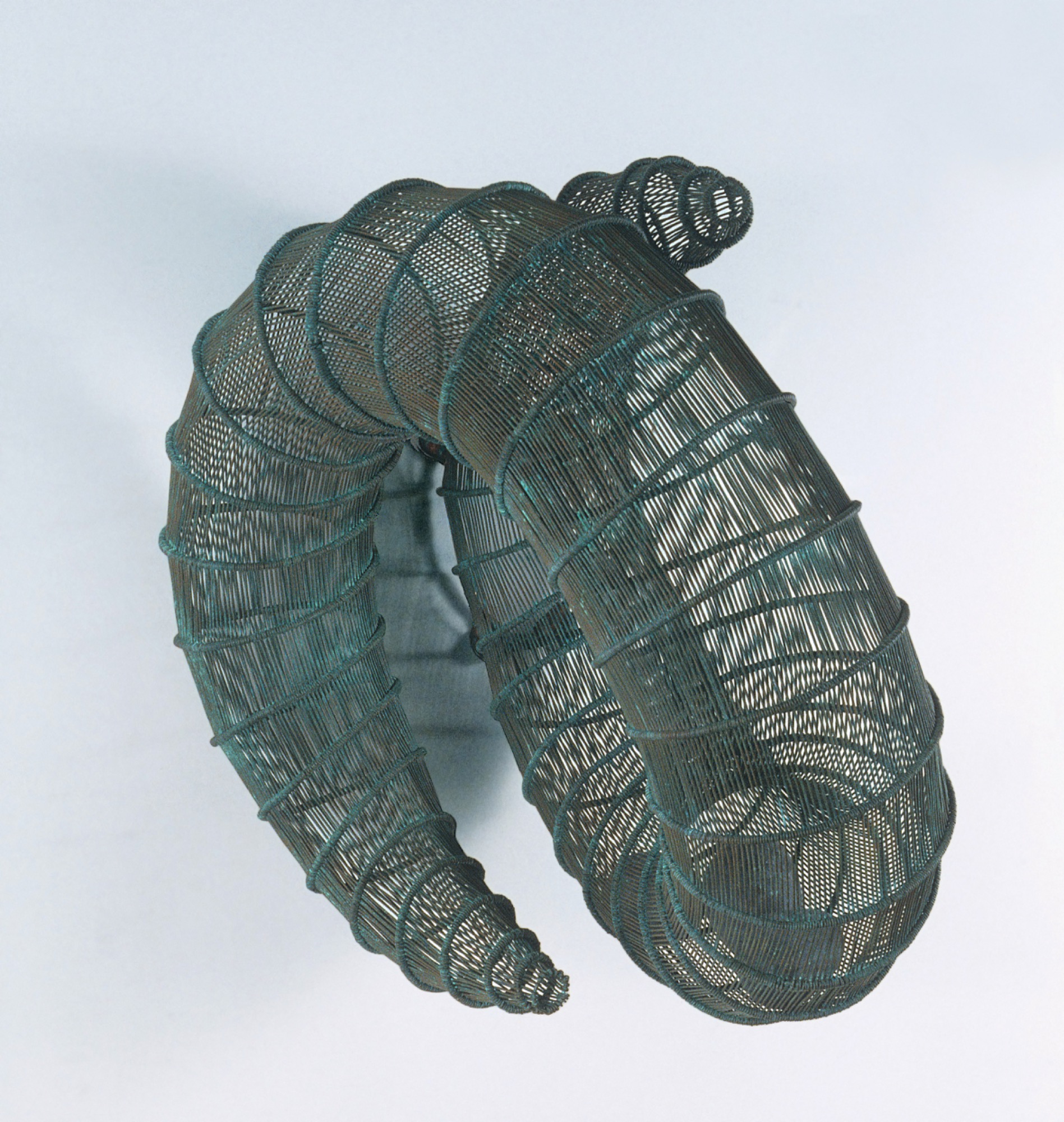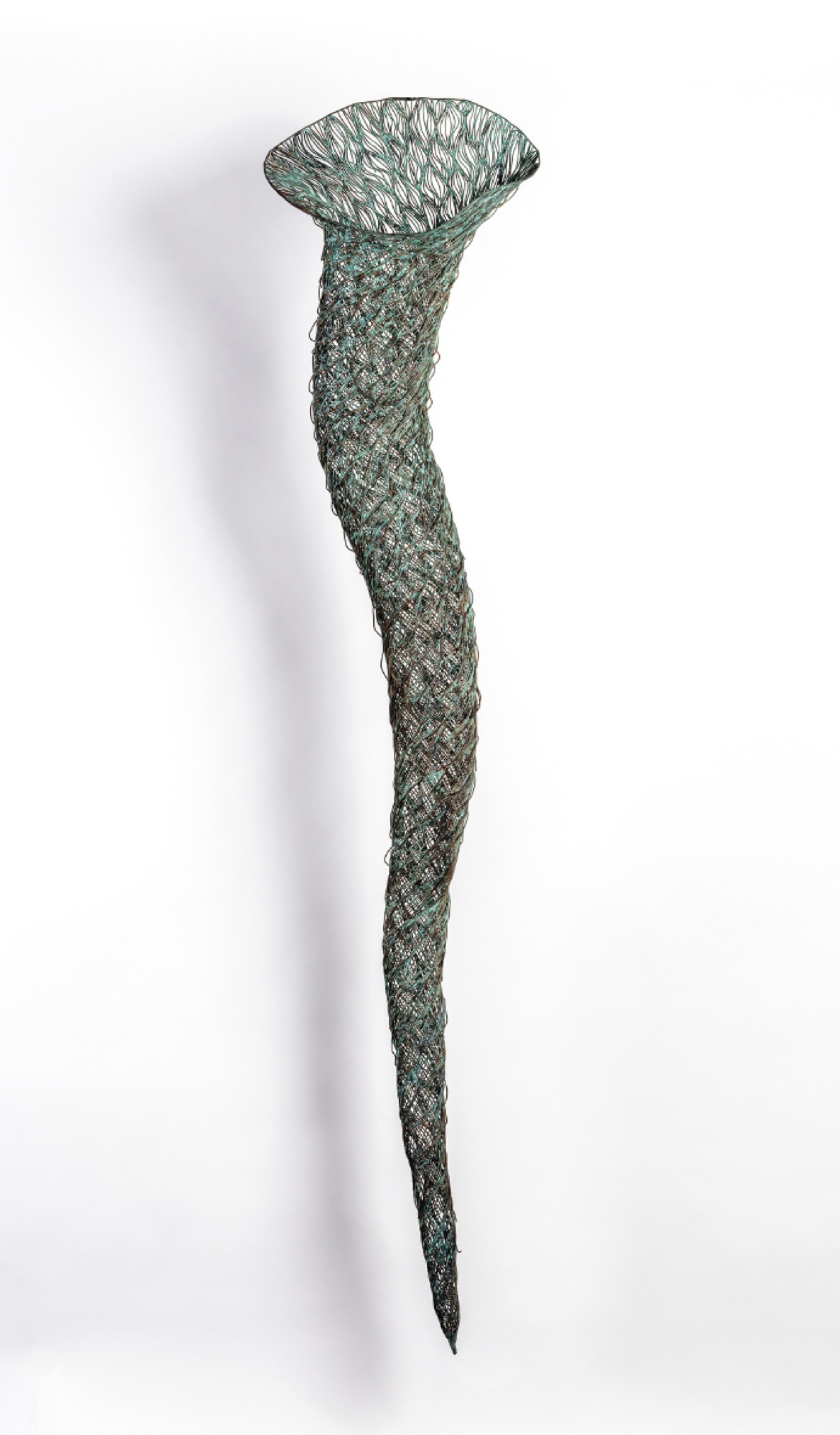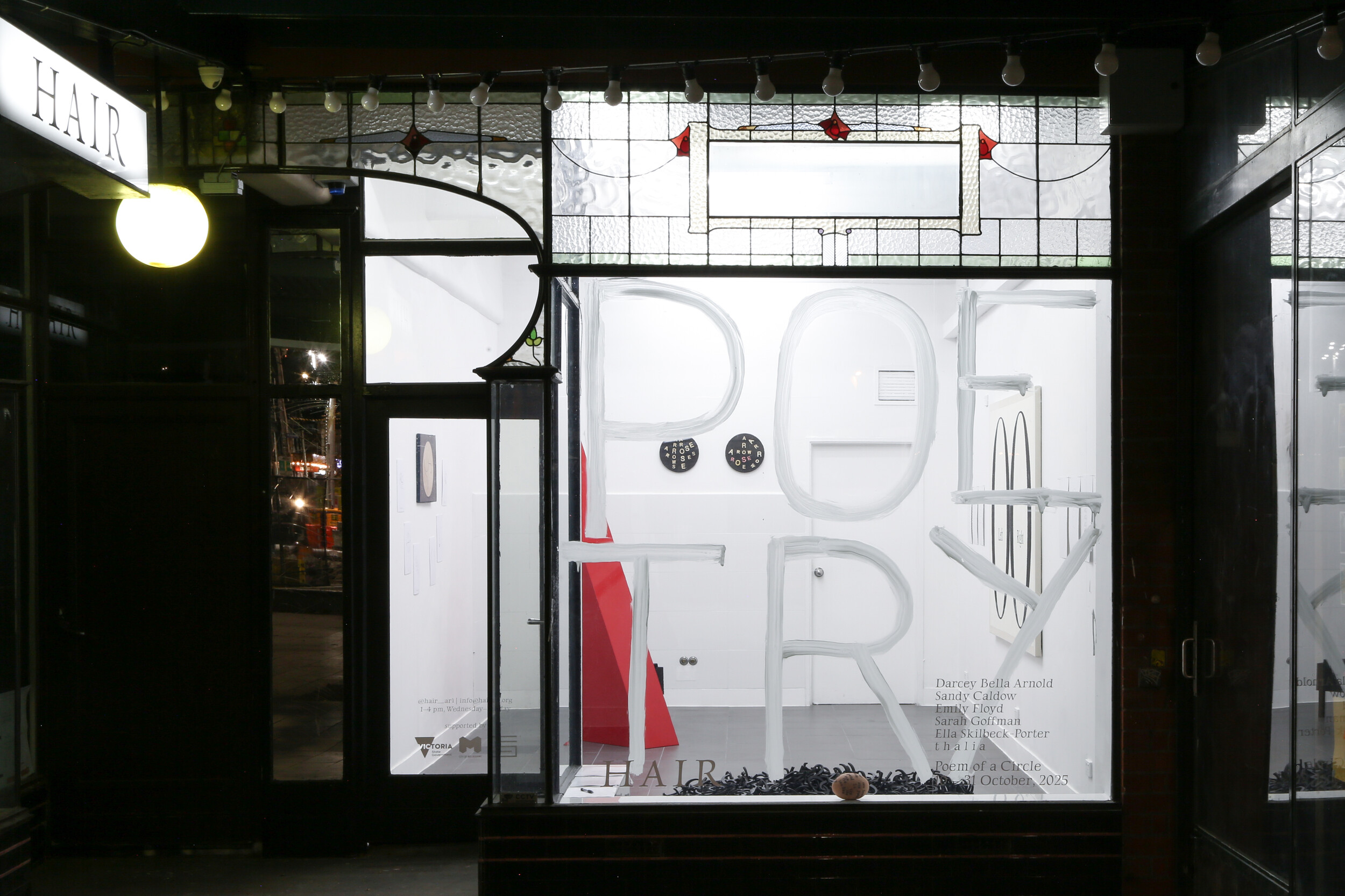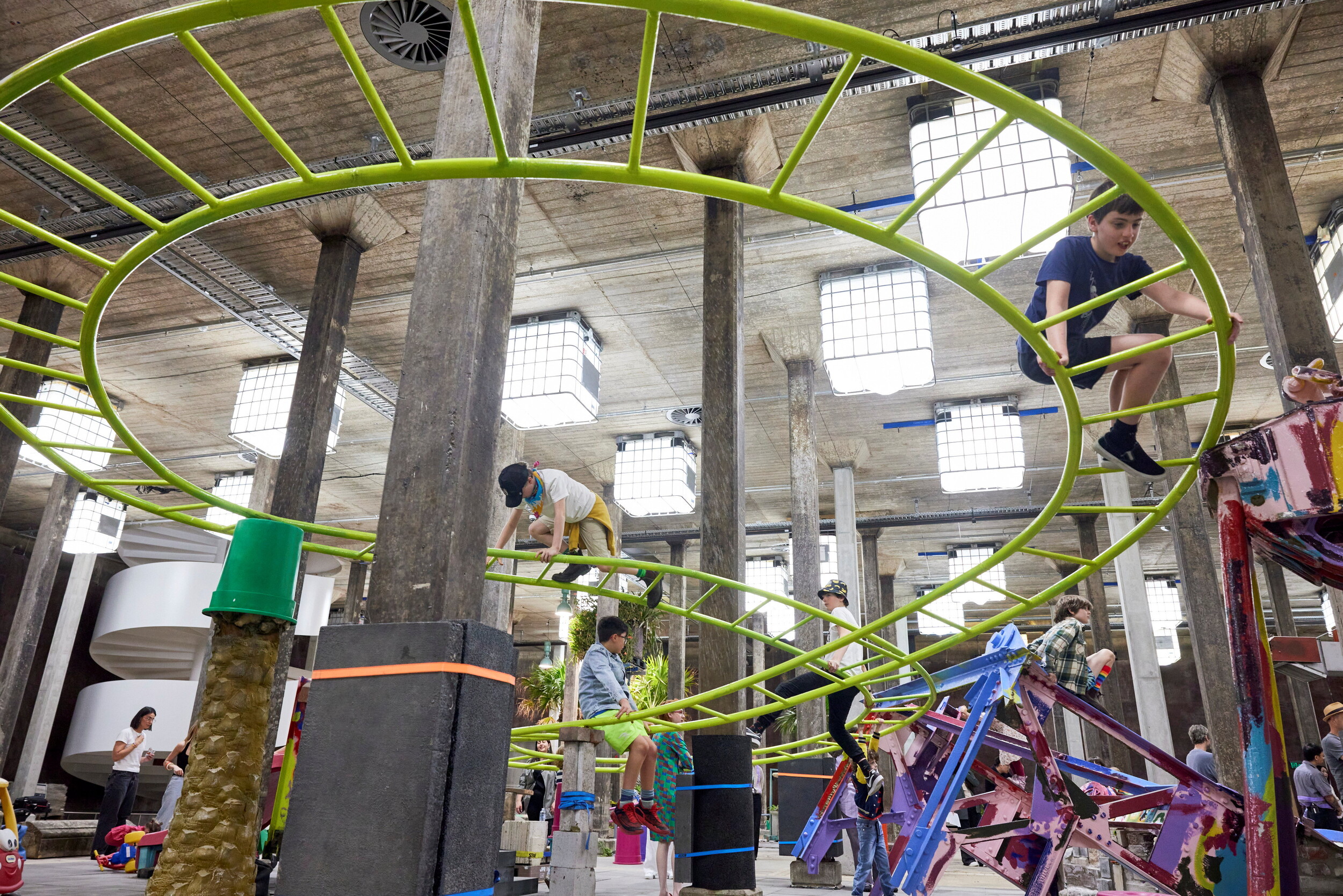The Sculpture of Bronwyn Oliver
Helen Hughes
The Sculpture of Bronwyn Oliver is the first major survey of the work of Australian artist Bronwyn Oliver (1959–2006). Though her career was cut short by her premature death at age forty-seven, the body of work presented within this exhibition has a pulse—writhing with movement and flickering with energy.
Oliver, a Sydney-based artist who undertook several stints in France and England during her life—notably studying at London’s Chelsea School of Art in 1982–83, and winning the prestigious Möet & Chandon Award in 1994—is renowned for her large-scale sculptures, which can be seen in various public and private locations around Australia (including Brisbane’s Queen Street Mall, Adelaide’s Hotel Intercontinental and Sydney’s Royal Botanic Gardens). Ewington’s survey aims to reconcile the many different outcomes of her oeuvre—showcasing maquettes for public art commissions (some executed, others not), prints on paper, and numerous smaller wall- and floor-based sculptures, most of which would have been first exhibited with her long-term gallerist and friend, Roslyn Oxley.
In the first gallery, Oliver’s early works from the mid to late 1980s appear on the scene like props from a science-fiction film. Unicorn 1984 splays out on the floor like an oversized and bifurcated vertebra—a bone fragment left behind by an unknown creature. The H.R. Giger–like Ladder (1987), a gently curving tear-shaped pod made from paper, fibreglass and cane, hangs from a thread nailed to the wall like a cocoon housing a giant insect. It has been bisected to show an eerie interior of brown tubes ascending the interior cocoon wall like rungs on a ladder, which correspond to a spine of curling spikes that emerge from the cocoon’s exterior wall like a primordial defense.
That said, not a trace of the bleak and unrelenting machismo of Giger is present in Oliver’s sculptures. Instead, surreal metonyms for the female body permeate these earliest works. Captive object (1987), an elongated biomorphic fibreglass form encased in a cane cage molded exactly to its shape, more readily connotes the contemporaneous sculptures of Louise Bourgeois. Whereas Siren (1986)—an exquisite and kind-of explicit sculpture that resembles two huge white snail shells bonded together, leaving only the thinnest vertical slit opening onto the sculpture’s pink interior—hints at the sly biology of Georgia O’Keefe’s flower paintings.
TarraWarra’s large central gallery and light-filled north gallery are dedicated to later works in copper, of which there are around forty. Here, we see Oliver developing her idiosyncratic approach to the medium characterised by an obsessive, repetitive patterning of fine lines worked into the round to produce three-dimensional objects that shimmer and flash as the viewer moves in front of them.
Hatchery (1991) takes the approximate shape of a ram’s horn, but with points at either end. It protrudes from the wall at a ninety-degree angle, entreating the viewer to circumnavigate it, which produces a striking moiré effect at the moments of juncture between every overlapping curl. (Nestled in the bottom of the vessel are three eggs, encouraging a reading that would tie it to female reproductive organs, as with Siren.)

In the main central gallery, all the works but two are hung on the wall and directionally lit as if paintings, not sculptures. This produces an intricate play of shadows that compete with and haunt the sculptures themselves. These shadows, along with the numerous instances of moiré, make the artworks dynamic and energise the exhibition space.
As Ewington notes in the catalogue, Oliver was making sculptural works in copper at a time when many sculptors were turning to ephemeral materials or temporary installations (a trend that may still be said to hold today, and which is what renders The Sculpture of Bronwyn Oliver so thoroughly refreshing an exhibition to visit). Despite the resolute fixity of her medium, however, almost all Oliver’s works declare an essential openness or refusal to be closed off, be introspective, or to turn their backs on the world.

Perhaps this is why the spiral form appears with such metronomic regularity throughout her work—whether seemingly in reference to a snail’s shell, a whirlpool or a human cochlear. A favourite shape for science-fiction fans (think Smithson’s Spiral Jetty) and Marxist-Hegelians alike, the line of a spiral moves back in on itself while advancing to another place; it also culminates in an opening, suggesting—as Svetlana Boym has written of the diagonally ascending spiral in Tatlin’s Monument to the Third International—‘unfinalisability, not synthesis’.
A small handful of the works included in the exhibition stand out for countering this essential openness. Shield (1995) and Wrap (1997) are both made of solid sheets of copper that have been ruched to give the impression of fabric, then striated with constrictive rectilinear bonds. The lurid green, heavily oxidised copper Heart (1988) has the armature of a Trojan horse, but for the two yawning holes of truncated arteries, which haplessly mill about the sculpture’s top like a pair of snail’s antennae.
Such works stand ever so slightly at odds with the rest of the exhibition and add to it subtle undertones of melancholy, isolation and, perhaps, some sense of the ultimate impossibility of communication or connection—a theme that drives many of science-fiction’s best writers, such as Stanislaw Lem.
But for all their efforts at concealment, like a veil that draws attention to that which it seeks to hide, we know that these works harbour a life force. Channeling what critic Michael Fried famously described as the ‘inner, even secret, life’ of Robert Morris’s Untitled (1965) and Tony Smith’s ‘pneumatic structures’, Oliver spoke of Shield as having a ‘swelling/breathing form beneath the surface’. And, in this sense, her sculptures truly ‘survive’ her, as is testament in this exhibition-tribute to her life.
Helen Hughes is research curator at Monash University Museum of Art, and an assistant lecturer in Art History and Curatorial Practice in the Faculty of Art, Design & Architecture at Monash University.
Curated by Julie Ewington


